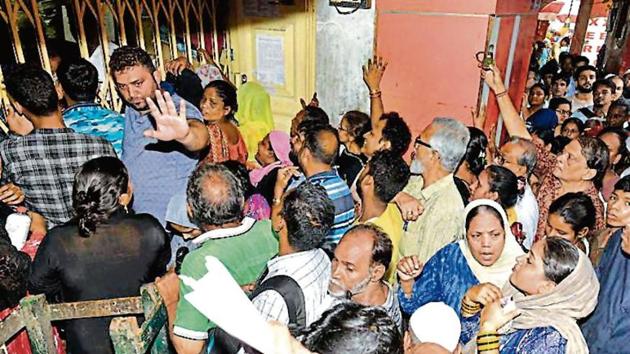HTLS 2019: Administrative reforms vital for 21st century State
Over the next few decades, India will need to confront head on the consequences of unequal growth, rapid urbanisation, climate change and technological advancement.
India cannot march into the 21st century with administrative systems of the 19th century. This statement made by Prime Minister Narendra Modi in 2016 powerfully articulates India’s single biggest challenge today — the challenge of transforming its administrative systems and building a competent and capable State.

Over the next few decades, India will need to confront head on the consequences of unequal growth, rapid urbanisation, climate change and technological advancement. This will require negotiating competing, conflicting pressures while building synergies and balancing trade-offs.
Consider the opposing pulls between goals of increased energy provision and infrastructure to fuel economic growth versus climate change. To negotiate these pressures, administration in the 21st century will have to be innovative, nimble and responsive to knowledge.
But does India have the tools to credibly negotiate this transition into a 21st century State?
Any attempt at reforming administration will first need to confront past failures and widespread disenchantment. Despite two decades of steady economic growth, the Indian State has proven incompetent in fulfilling even its most basic sovereign functions from law and order to delivering health and education.
This frustration with the State and resultant disenchantment has given rise to a paradigm for reform that paradoxically seeks to strengthen the Indian State by quite literally trying to get it out of the way. This is most visible in three reform solutions that have come to dominate state building efforts in the last decade.
The first is the technology solution. From mobile apps, GPS mapping to data dashboards and direct benefit transfers, technology is being served up as a solution to nearly every administrative problem that India confronts today. Technology brings with it the promise of removing layers of inefficient red tape and bypassing venal bureaucrats to directly service citizens, at speed. The objective here is to avoid the trappings of the State and its bureaucratese rather than use technology as an aid to fix it.
The second is the private consultant solution. Walk in to any government office across the country today and chances are you will encounter a private sector consultant offering up professional services and expertise to substitute for capacity and competence gaps within the State. The importance of private consultants is best illustrated in a recent report in the Financial Times, which points out that budget allocations for “professional services” in the Niti Aayog increased nearly five-fold from ₹3.86 million in 2016-17 to ₹18.2 million in 2017-18 and rose by another 30% in 2018-19. Consultants may well bring expertise in strategic design and problem-solving skills necessary for good governance. But, their recent proliferation point to the fact that rather than build these competencies within the bureaucracy, the approach is to outsource State capacity by contracting expertise in short doses.
The third is the personality solution. There is today a clamour (both within government and amongst citizens) for strong leaders and personality cults that can overcome deeply entrenched administrative failure through the force of personality to get the job done.
In one state government after another, it is the Chief Ministers’ Office and a few select bureaucrats that are now running the state. This model has little patience and time for investing in processes and administrative capacity. Instead it is using Project Management Units peopled with private sector consultants to get the job done. Reform by stealth and deploying the power of hierarchy is the new mantra.
The common thread binding these disparate approaches to State building is a deep disenchantment with the State and its 19th century modes and practices. Rather than investing in the process and people that make the State, the current reform paradigm is seeking quick fixes that wish the State away. This approach has served to entrench rather than challenge the very structures, systems and culture that rendered the State incompetent in the first place.
Transforming this heavily outsourced, centralised State bound together through technology quick fixes into an agile, innovative being that can break silos to build a shared vision and consensus across levels of administration, will require a new paradigm that brings the ‘State back in’.
This will involve ensuring that finances and powers are allocated at levels of administration that are best placed to respond to specific needs, and building human resource capacity and skill inside the State. Building a 21st century India will need us to shed our collective disenchantment and pledge ourselves to the task of rejuvenating the State. This is a challenge not just for India’s policy makers but for all Indians.



